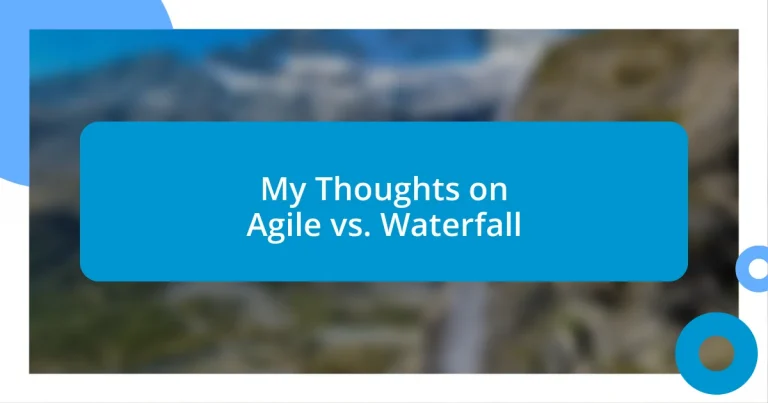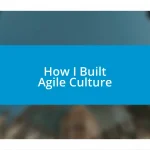Key takeaways:
- Agile promotes flexibility and collaboration, allowing teams to adapt to changes and maintain engagement throughout projects.
- Waterfall offers a clear structure and predictable timelines, making it effective for projects with well-defined requirements and regulatory standards.
- Real-world examples highlight how Agile can enhance product development through rapid iterations, while Waterfall excels in environments requiring thorough planning and documentation.
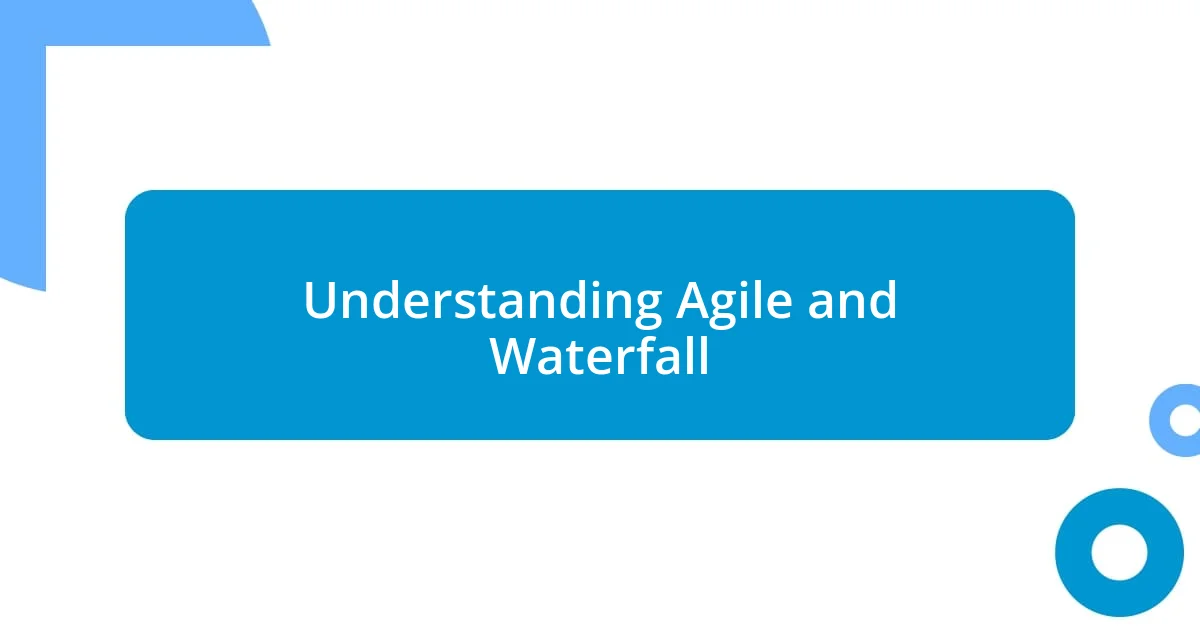
Understanding Agile and Waterfall
Agile and Waterfall represent two distinct methodologies for managing projects, each with its unique approach and philosophy. I remember my first encounter with Agile during a six-month project where we constantly adjusted our plans based on feedback. This iterative process felt so liberating compared to the rigid nature of Waterfall, where each phase is sequential, and changes can feel like an uphill battle.
Waterfall, with its linear structure, is like following a recipe step by step, ensuring everything is precisely in order. However, I often found myself questioning whether we were too committed to the plan, especially when unforeseen challenges arose. Isn’t it easier and more practical to adapt as we go rather than adhering strictly to the initial plan?
On the flip side, Agile urges teams to embrace flexibility and collaboration, allowing for continuous improvement. This resonates deeply with me; the ability to review and adapt keeps everyone engaged and invested in the project’s success. I’ve witnessed firsthand how teams thrive in this dynamic environment, where change is not feared but embraced.
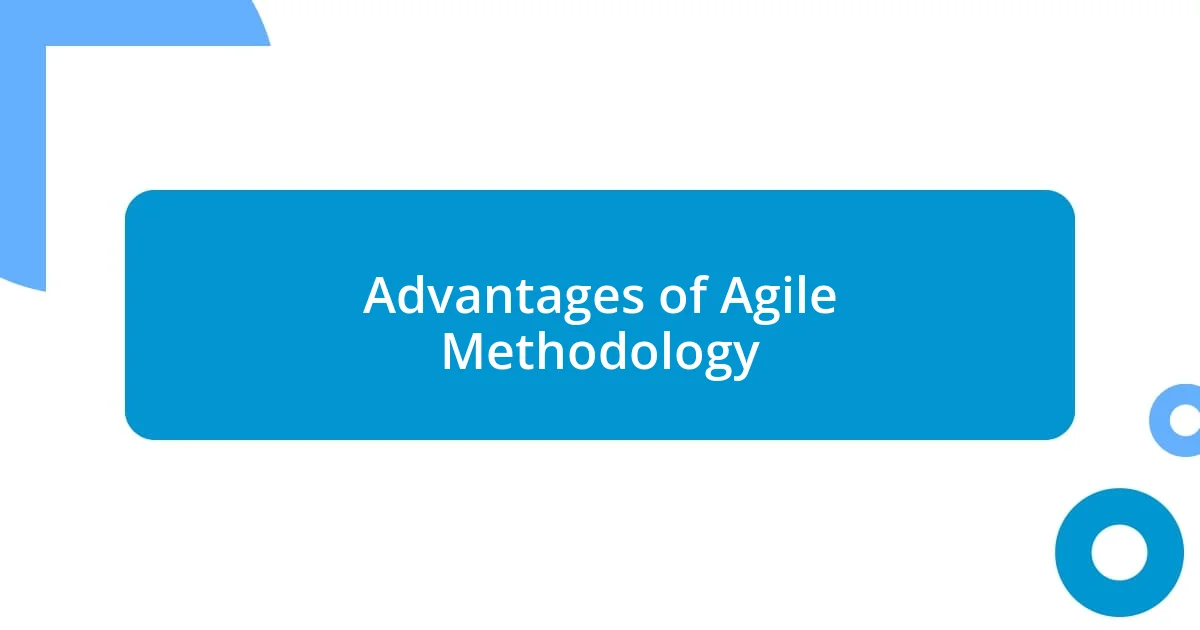
Advantages of Agile Methodology
One of the standout advantages of Agile methodology is its remarkable flexibility. I remember a specific project where shifting requirements felt daunting. Agile allowed us to pivot swiftly based on client feedback without throwing the entire timeline off balance. This responsiveness not only boosted our team’s morale but also led to a better product that truly met the client’s needs.
- Iterative development leads to faster delivery of updates and improvements.
- Early and continuous customer involvement enhances product relevance.
- Cross-functional teams encourage diverse perspectives and teamwork strengthens camaraderie.
- Frequent retrospectives foster a culture of continuous learning and adaptation.
- Reduced risk through regular assessments minimizes project failures.
Additionally, Agile’s emphasis on collaboration can transform team dynamics. In one memorable sprint, we worked closely with stakeholders, forging stronger relationships that carried over beyond the project. Those daily stand-ups became not just a routine, but a way to celebrate our small wins together. That connection made all the difference in keeping us motivated, especially during crunch times.
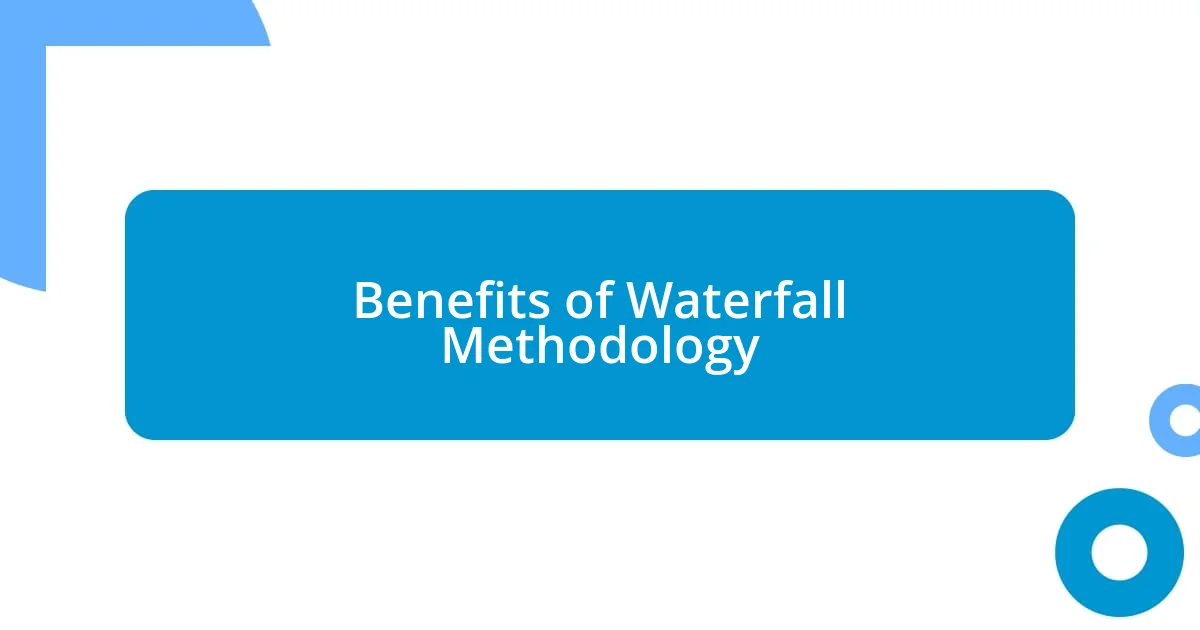
Benefits of Waterfall Methodology
Waterfall methodology offers several notable benefits that can significantly impact project success. One of the most prominent advantages is its straightforwardness. I recall a time when I was part of a software development project, and the clear structure of Waterfall allowed us to easily follow a predefined path. Each phase—requirements, design, implementation, and testing—was meticulously planned, ensuring that everyone knew their responsibilities and deadlines. This clarity can reduce confusion and keep teams focused.
Another key benefit is thorough documentation. In my experience, having well-documented processes and deliverables in Waterfall helps maintain a clear project history. When unexpected issues arose, we could easily refer back to earlier documents to find solutions. It felt reassuring to have that foundation; knowing that we had everything carefully recorded made collaboration with new team members smoother and faster.
Lastly, the Waterfall method often leads to a more predictable project timeline. I remember working on a government initiative where deadlines were crucial. The linear process allowed us to provide clear timelines to stakeholders, creating a sense of trust. This predictability can be comforting for clients and team members alike, as it clearly outlines progress and keeps everyone aligned with the project goals.
| Benefits of Waterfall | Explanation |
|---|---|
| Clear Structure | Waterfall’s linear approach provides an easily understandable path for teams to follow. |
| Thorough Documentation | Robust documentation ensures a clear project history that aids in problem-solving and onboarding. |
| Predictable Timelines | Establishes reliable deadlines that boost stakeholder confidence and manage expectations. |
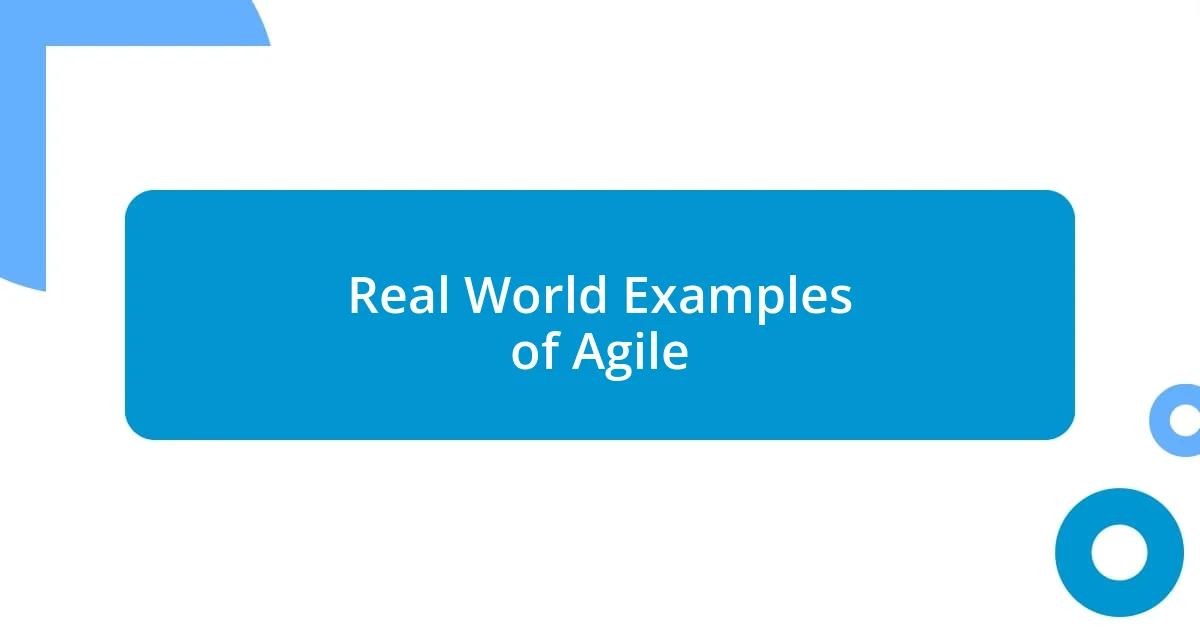
Real World Examples of Agile
Consider a tech startup I worked with that adopted Agile for their product development. Their approach allowed rapid iterations, and I still vividly recall a sprint review meeting where we demoed a new feature to the client. Seeing their excitement as we quickly adjusted based on their feedback reinforced my belief in Agile’s power to cultivate genuine collaboration and create products that resonate with real user needs.
In another case, a nonprofit organization faced a tight deadline to launch a fundraising platform. By using Agile, we divided the project into manageable chunks, releasing a basic version quickly. Watching the team’s spirits lift when we celebrated each milestone was priceless; it was a reminder of how Agile not only accelerates delivery but also boosts team morale by turning challenges into collective achievements.
I’ve often wondered how different our outcomes would have been with a traditional method. One project had us rework concepts based on user testing results. With Agile, making those changes felt natural and invigorating. The end product transformed into something that truly reflected the users’ preferences—an outcome I doubt we would have achieved without Agile’s iterative cycle. Wouldn’t you agree that this adaptability is a game-changer in today’s fast-paced environments?
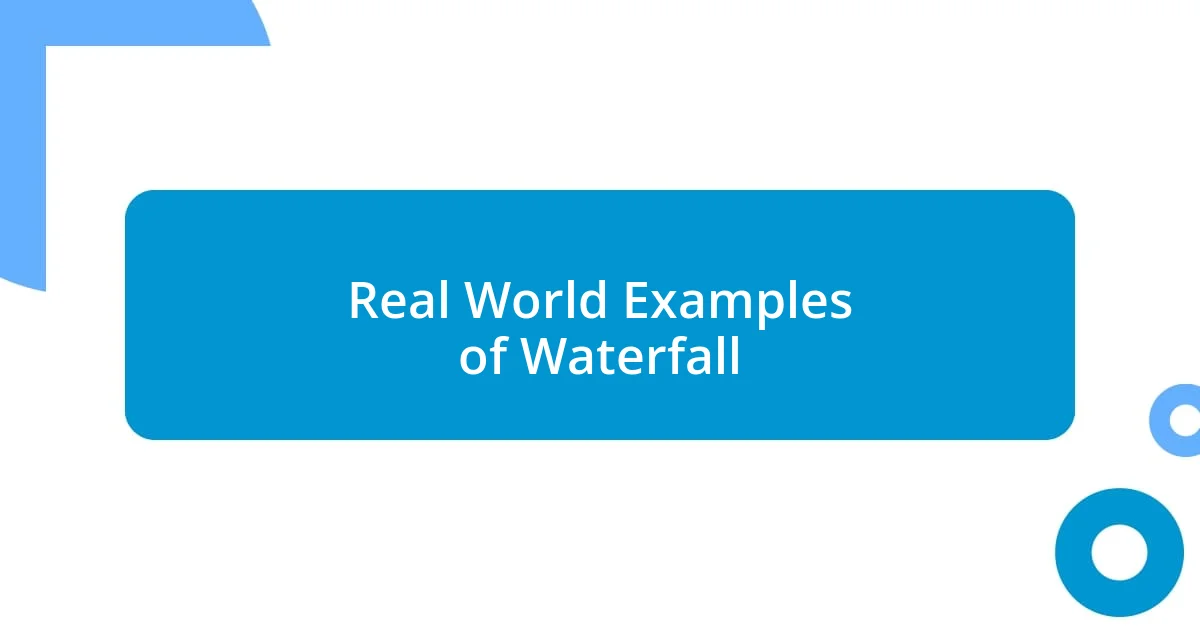
Real World Examples of Waterfall
When it comes to real-world examples of the Waterfall model, I often think back to a large construction project I was involved in. The project had strict regulatory requirements that made it essential to follow a sequential approach. Each phase, from groundwork to the final inspections, was laid out in advance, ensuring that everything adhered to safety standards and city regulations. The clarity of the Waterfall method allowed the entire team to stay organized and make informed decisions.
Another instance that stands out was a software implementation for an educational institution. We spent months gathering requirements and designing the system before diving into development. I remember the sense of accomplishment when we finally launched. While it might have felt tedious during the planning stages, seeing the students and faculty seamlessly adapt to the new platform made every bit of that upfront work worthwhile. It was a reflection of Waterfall’s effectiveness in scenarios where requirements are well-understood and unlikely to change.
Yet another clear example was during a healthcare-related project I participated in. We had to develop a medical device that complied with stringent regulatory guidelines. The linear nature of Waterfall helped us ensure compliance at every step, from the design phase through to final testing. I can still recall the tension in the room on the day we submitted our final documentation for certification. Knowing we had meticulously followed each phase gave us confidence, but I’ve also wondered—would an Agile approach have allowed for quicker responses to changing regulations? It’s a thought that lingers in the back of my mind.












